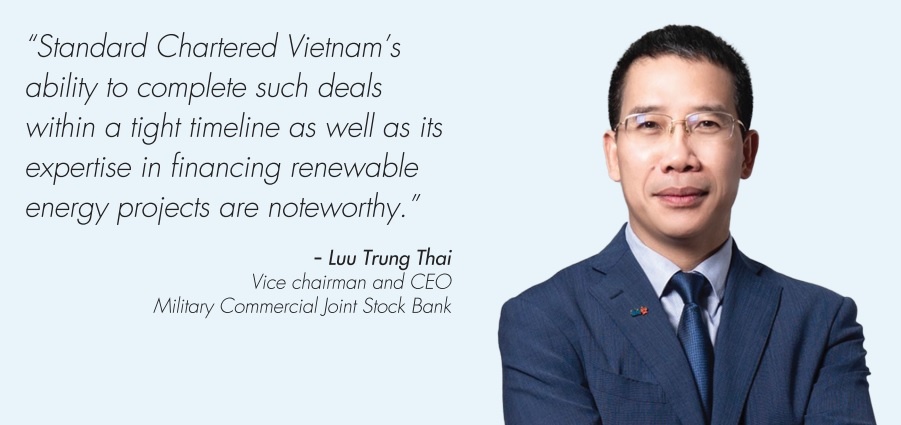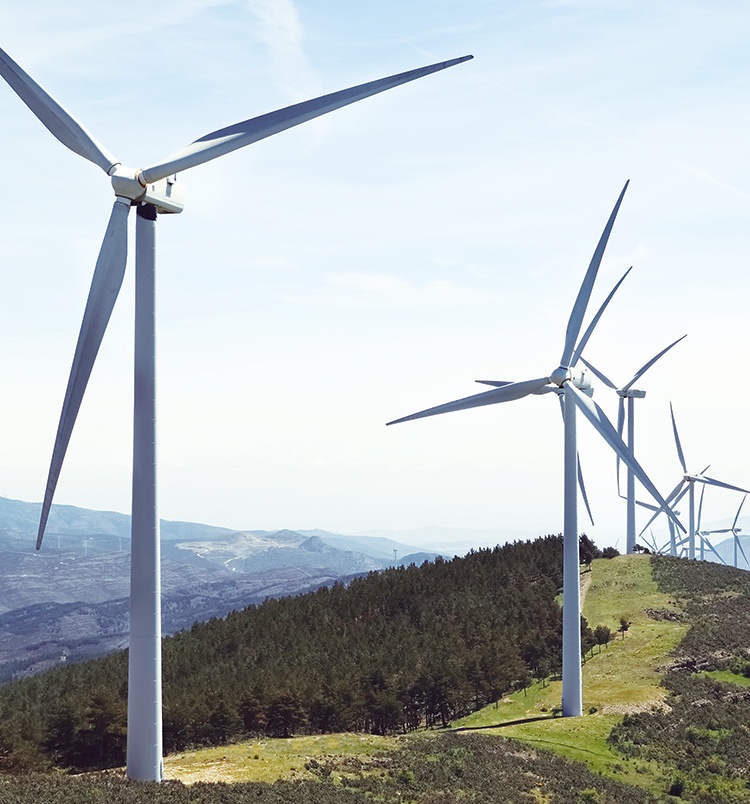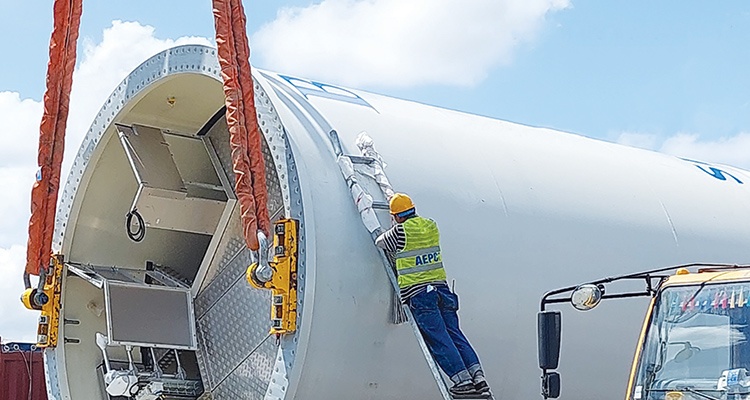Unleashing Vietnam’s clean power potential
Vietnam today has reached a tipping point of clean energy development. In 2012 when then Deputy Prime Minister Nguyen Xuan Phuc opened Vietnam’s first wind farm, the 20-turbine 30MW Bình Thuan wind power plant, few could have imagined the renewable energy revolution that would accelerate over the ensuing decade.
In just nine years, renewable energy capacity has almost tripled, from 13.7GW in 2012 to almost 36GW in 2020, most of which comes from hydroelectricity. Vietnam has overtaken Thailand, the region’s second-largest renewable energy economy, with three times the electricity generation capacity of the latter. During 2020, renewable energy accounted for some 30 per cent of the nation’s electricity output – with natural gas and coal collectively contributing almost 70 per cent.
“With hydropower fully exploited, the country’s resources of coal, oil, and gas declining, and nuclear power no longer feasible due to cost and safety concerns, sources of renewable energy are viable alternatives,” explained Luu Trung Thai, vice chairman and CEO of Military Commercial Joint Stock Bank (MB). “Wind, solar, biomass and waste-to-energy (WTE) are new types of clean energy that will power Vietnam in the coming decades, bringing prosperity to businesses and society alike.”
It is no small feat to keep pace with the energy demand of Vietnam’s burgeoning economy, which is growing annually by 6 per cent. By 2030, the country will require up to 632 terawatt-hours per annum – more than double the amount consumed in 2020. If Vietnam can supply this level of energy consumption, it will become one of the world’s top 10 electricity producers, ahead of economies like the United Kingdom, France, and Germany.
To fulfil the country’s renewable energy potential, continued support from the government of Vietnam is essential, as is assistance from financiers and private-sector industry players – from both within the country and overseas.
 |
Policies and plans
The government has been actively fostering renewable energy generation over the past five years. Its Power Development Plan VII and its recently announced replacement have set ambitious targets for wind, solar, biomass, and WTE projects. These four types of renewable energy will increase their share in Vietnam’s energy mix from about 3.5 per cent in 2010 to 44 per cent by 2045, according to the plans. About 10 per cent of the nation’s electricity consumption is currently powered by these four renewable energy sources.
Favourable power purchase agreements (PPAs) between electricity producers and state-owned Electricity of Vietnam ensure power companies will receive a fixed tariff for 20 years once a plant goes live. For example, producers will receive VND1,928 (8.5 US cents) per kWh for onshore wind power projects and VND2,223 (9.8 US cents) per kWh for offshore wind power projects. These rates are comparable to industry PPAs elsewhere in the Southeast Asian region.
Winds of change
 |
| Unleashing Vietnam’s clean power potential |
Vietnam has set a capacity target for wind power of 2,000MW by 2025 and 6,000MW by 2030. The aforementioned incentives make renewable energy projects particularly attractive. “MB views the financing of renewable energy as an opportunity to contribute to the country’s development, and improve and preserve its ecological environment,” Thai added.
The bank is financing two noteworthy projects: the 75MW nearshore Tan Thuan wind power project in the Mekong Delta province of Ca Mau, owned by Ca Mau Energy Investment JSC, and the 117MW onshore Hanbaram wind farm in the central province of Ninh Thuan, owned by Hanbaram Wind JSC.
Thai said MB brought several attributes to the projects. “We have an in-depth knowledge of the intricacies of renewable energy projects – including legal matters, the viability of natural conditions, technology, and construction. Besides that, the bank has developed a robust financing plan from thorough research of previously approved projects to identify the most feasible approach,” he said.
 |
Looming uncertainty
Projects like Tan Thuan and Hanbaram can be challenging to finance. Long-term US-dollar funding can be costly, unavailable, or prohibitive for project owners. Wind power projects involve significant upfront capital – about VND40 billion ($1.64 million) per MW for onshore projects, and VND56 billion ($2.4 million) per MW for offshore projects – and tend to involve a payback period of more than 14 years. These issues may deter some lenders.
Corporates and banks in Vietnam typically use an export credit agency guarantee as risk mitigation when seeking funding from foreign banks, which have competitive cost but limited risk appetite. However, the application process for such agencies is especially time-consuming, hence projects on a tight schedule usually miss out.
An additional hurdle was the COVID-19 crisis, which has not only disrupted the supply chains for such projects, but also kept staff, construction workers, and engineers off-site. Uncertainty troubled the two project owners as well as MB and China Energy Engineering Group SEPEC (CEEC) – the company in charge of building and operating both projects, as well as the procurement of technology and equipment.
Bridging the gap
Fortunately help was at hand, thanks to Standard Chartered Vietnam, a key partner of MB, and Standard Chartered China, a long-time supporter of CEEC’s business at home and overseas. By representing both the beneficiary and the issuing bank, Standard Chartered could conduct negotiations smoothly. The bank’s ability to complete such deals within a tight timeline as well as its expertise in financing renewable energy projects, were also noteworthy. Together, the two country branches provided essential support for Tan Thuan and Hanbaram, especially in financing the wind turbines that will power both projects.
CEEC selected the Siemens Gamesa 4.X wind power platform, powered by SG 5.0-145 turbines. These are industry benchmark platforms made overseas, renowned for their operating efficiency, robust design and state-of-the-art remote monitoring capabilities. Siemens Gamesa will provide 16 units to Tan Thuan and 29 units to Hanbaram, with the estimated capacity to meet the electricity consumption needs of approximately 400,000 Vietnamese residents.
Standard Chartered China was the confirming bank and discounting bank for the letter of credit (LC) issued to both projects. Standard Chartered Vietnam provided consultation, facilitated the LC term, and helped with negotiations between all parties. The bank also acted as a communication channel between the beneficiary and the project owner.
“To meet the requirements of the projects, we received support from Standard Chartered Vietnam in terms of funding arrangement – as well as LC opening, confirming and discounting,” Thai of MB said.
While Standard Chartered faced fierce competition from numerous Chinese and international banks, its track record tipped the scales. Michele Wee, CEO of Standard Chartered Vietnam said, “Our deep relationships on both sides of the deal, strong focus on renewable energy projects, execution record, and distribution capability to generate market appetite in a short span of time ensured Standard Chartered was the banking partner of choice for the two projects.”
The bank has since won three further wind projects in Vietnam, making the total volume size for the five deals sit at around $538 million.
“The Tan Thuan and Hanbaram projects proved that even during difficult times, sustainable projects receive much support from international banks like Standard Chartered,” added Wee. “Successful ventures like these draw greater attention to renewable energy, and encourage more private-sector participation in both the financing of international trades and the building of such projects. They help create opportunities for local and overseas businesses, while unleashing Vietnam’s clean power potential.”
For more insights on ASEAN, please visit: sc.com/asean-insights
What the stars mean:
★ Poor ★ ★ Promising ★★★ Good ★★★★ Very good ★★★★★ Exceptional
Related Contents
Latest News
More News
- Heavy industries set for pilot greenhouse gas quotas (December 25, 2025 | 10:00)
- Swedfund invests in MSME growth and climate action in Vietnam (December 19, 2025 | 11:42)
- GreenYellow brings solar energy to light up remote schools in Tuyen Quang province (December 19, 2025 | 08:00)
- Charge+, Grab partner to develop EV charging network in Vietnam (December 18, 2025 | 17:11)
- Linking sci-tech and innovation to Vietnam’s net-zero future (December 18, 2025 | 14:31)
- Driving double-digit growth through green and circular transformation in Vietnam (December 17, 2025 | 09:00)
- Standard Chartered and ACCA deepen collaboration to develop Vietnam’s talent for a sustainable future (December 15, 2025 | 18:18)
- Schaeffler reports strong early output from Dong Nai solar project (December 12, 2025 | 15:16)
- Forestry conference highlights biodiversity and sustainability goals (December 09, 2025 | 13:35)
- Home Credit honoured among top 10 sustainable companies in trade and services (December 09, 2025 | 12:18)

 Tag:
Tag:




















 Mobile Version
Mobile Version